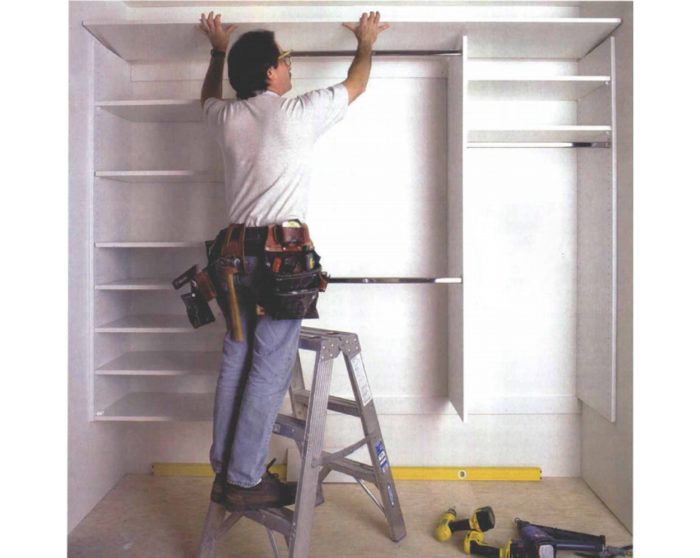Outfitting a Clothes Closet
If your clothes have that shelf and pole at their limit, a more complex system can help you put more clothes into less space.

Synopsis: The author explains how a well-planned system of shelves and hanging poles makes closet storage more efficient.
Clothes closets used to be really simple. A single shelf with a pole high enough to keep long dresses off the floor seemed to be all anyone ever needed. Maybe people didn’t have as many clothes then, or maybe space wasn’t at such a premium. These days, though, people are demanding much more from their closets.
That good old shelf and pole might be all you need
The most common closet-shelf arrangement in American households is probably still a single shelf and pole. With this system, the shelf is installed at 68 in. with the pole at about 66 in. from the floor, which is high enough to keep even the longest hanging clothes, such as coats and dresses, off the carpet.
I make most single-shelf arrangements out of medium-density fiberboard (MDF), and the layout is simple. First, I mark the shelf height of 68 in. and draw a level line on the back wall of the closet. Then I measure and cut the cleat for the back wall. The side-wall cleats have to hold the closet pole, so I cut them long enough to catch a stud for solid support. I make the cleats out of 1×4 so that they are wide enough to attach the rosettes that I install to hold the closet pole.
Back in the closet, I hold the back-wall cleat to the level line, and I attach the cleat with two 8d finish nails at each stud. Next, I level the side cleats with a torpedo level and then shoot them into place. The closet shelf is now ready to be dropped into place on top of the cleats.
For any span greater than 44 in., I install a shelf-and-pole bracket midspan, using a 10-in. piece of cleat stock as a backer block to hold the bracket away from the wall. If there is no stud for securing the backer block, I use screws driven into drywall fasteners that will be hidden by the bracket. The bracket is then screwed to the cleat, to the backer block and to the shelf.
On the side cleats, I center the pole rosettes the same distance from the back cleat as the hook on the support bracket, usually 11 1/2 in. to 12 in., depending on the bracket. Next, I measure and cut a wooden dowel for the closet pole and drop it into place. A screw driven into the pole through the support bracket completes the installation. I always predrill so that the screw doesn’t split the pole.
Planning lets you maximize storage and production
These days, most homeowners want to make the most of clothes storage in their closets, so the old shelf-and-pole system won’t do. Besides the single shelf and pole, which is needed for long, hanging items such as dresses and coats, other closet-storage arrangements include a double pole for shorter hanging items, such as pants and shirts, and banks of shelves for shoes and sweaters.
For more photos and details, click the View PDF button below:


























